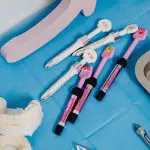Is recovering your recliner worth the cost? It's a question many consider when faced with the decision to restore or replace their beloved furniture.
In this exploration, we'll weigh the sentimental value, cost of reupholstering, and the quality of the recliner against purchasing a new one.
You'll also consider the environmental impact and the long-term investment of your decision.
By the end, you'll have a balanced understanding of whether investing in the recovery of your recliner is truly worth the cost.
Key Takeaways
- Emotional attachment and sentimental value often outweigh the cost of recovering a recliner.
- Reupholstering allows for customization of fabric and contributes to environmental sustainability.
- Durability and comfort are crucial factors in assessing the quality of a recliner.
- Recovering a recliner can save a significant amount of money compared to buying a new one, especially if the recliner holds sentimental value or is of high quality.
Sentimental Value
If your recliner holds significant sentimental value for you, then recovering it may be worth the cost. The emotional attachment you have to a piece of furniture, especially if it's a family heirloom, can make the decision to recover it a deeply personal one.
While the financial cost of recovering a recliner can be significant, the sentimental value attached to it can outweigh the expense. The emotional attachment to a piece of furniture is often tied to memories and experiences, making it more than just an object. It becomes a symbol of family, comfort, and tradition.
The decision to recover a recliner with sentimental value should be weighed against the memories and emotions it represents. If the piece holds significant emotional value and has been passed down through generations, the decision to recover it may be more about preserving family history and tradition than just the cost of reupholstering.
Ultimately, the sentimental value attached to the recliner should be the driving force behind the decision to recover it, making the cost worthwhile for the preservation of family heritage.
Cost of Reupholstering
Recovering your recliner can cost anywhere from $300 to $600, depending on the fabric and labor involved. While this may seem like a significant investment, it's essential to consider the benefits of reupholstering compared to purchasing a new recliner. To help you weigh your options, here's a cost comparison between reupholstering and buying a new recliner:
| Aspect | Reupholstering | Buying New Recliner |
|---|---|---|
| Cost | $300 – $600 | $500 – $1000 |
| Customization | Can choose fabric | Limited options |
| Environmental Impact | Reduces waste | Contributes to waste |
| Quality | Preserves comfort | Inconsistent quality |
Reupholstering offers the benefit of maintaining a cherished piece of furniture, customized to your preferences, at a potentially lower cost than purchasing a new recliner. Additionally, it contributes to reducing waste and allows you to retain the comfort and quality of a familiar piece. However, it's crucial to assess the condition of your recliner and weigh the cost against the benefits of reupholstering.
Quality of the Recliner
When considering the quality of your recliner, it's important to assess its durability and comfort.
A good-quality recliner should provide long-term investment value, ensuring that you get the most out of your reupholstering cost.
It's worth examining these points closely to determine if recovering your recliner is a worthwhile decision.
Recliner Durability and Comfort
You'll want a recliner that provides long-lasting comfort and durability. When considering durability, look for sturdy construction, such as hardwood frames, metal springs, and high-density foam. These elements contribute to the longevity of the recliner.
Regular maintenance, such as tightening screws and lubricating moving parts, also plays a crucial role in ensuring the durability of your recliner.
Comfort and support are equally important. Look for ergonomically designed recliners that provide proper lumbar support and cushioning. The upholstery material also affects comfort and durability, with leather and high-quality fabrics being more resilient.
Prioritize a balance between durability and comfort to make a worthwhile investment in a recliner that will stand the test of time while providing the comfort you desire.
Long-Term Investment Value
To ensure the long-term investment value of your recliner, prioritize durability and comfort when selecting a recliner model. When considering the long-term investment value of your recliner, focus on these key factors:
- Durability: Look for high-quality materials and construction that can withstand regular use over many years.
- Comfort: Choose a recliner that provides long-term comfort, with proper lumbar support and cushioning that maintains its shape over time.
- Resale Value: Opt for a recliner with a strong resale value, should you decide to upgrade or sell it in the future.
- Warranty: Select a recliner with a comprehensive warranty to ensure long-term peace of mind.
- Reputation: Research the reputation of the brand and the specific model to gauge its long-term quality and customer satisfaction.
Comparison With New Recliner Prices
If you're considering recovering your recliner, it's important to weigh the cost against purchasing a new one. Comparing the price of recovering with the cost of a new recliner can help you make an informed decision.
Additionally, looking at the long-term cost analysis can provide valuable insights into the cost-effectiveness of recovering your recliner.
Cost-Effectiveness of Recovering
You can save a significant amount by recovering your recliner instead of buying a new one when comparing prices. This cost benefit analysis is particularly favorable if your recliner holds sentimental attachment or is of high quality. Consider the following factors in your decision-making process:
- Quality Comparison: Evaluate the quality of your current recliner against new options to determine if recovering is a more cost-effective choice.
- Customization: If you desire specific fabric, color, or design alterations, recovering may be a better option than limiting yourself to new recliner selections.
- Environmental Impact: Recovering your recliner aligns with sustainable practices, reducing waste and promoting eco-friendly choices.
- Repair vs. Replacement: Assess the overall condition of your recliner as repairing minor issues during the recovery process might be more cost-effective than purchasing a new recliner.
- Long-Term Investment: Consider the longevity of the recovered recliner compared to a new purchase, factoring in potential future recovery needs.
New Recliner Price Comparison
Recovering your recliner may present a significant advantage when comparing new recliner prices, particularly in terms of longevity and customization.
When considering the cost of a new recliner, it's essential to factor in the reupholstering process of your current recliner. The reupholstering process allows you to choose from a wide range of fabric options, enabling you to personalize your recliner to your exact preferences. This level of customization is often not available when purchasing a new recliner off the shelf.
Additionally, by recovering your recliner, you're investing in its longevity, potentially extending its lifespan for years to come. While the initial cost of recovering your recliner may seem comparable to purchasing a new one, the added benefits of customization and durability make it a cost-effective choice in the long run.
Long-Term Cost Analysis
When comparing the long-term cost of recovering your recliner with purchasing a new one, consider factors like durability, customization, and potential savings in the long run.
Reupholstering benefits include the ability to choose from a wide range of fabrics, patterns, and colors, allowing you to customize your recliner to suit your preferences. Additionally, reupholstering can often be more cost-effective than buying a new recliner, leading to long-term savings.
However, it's important to weigh the initial reupholstering costs against the price of a new recliner, taking into account the potential lifespan of both options. Consider the quality of the original recliner and whether reupholstering will restore it to a like-new condition.
Ultimately, the decision between reupholstering and purchasing a new recliner depends on your specific needs and budget.
Environmental Impact
Often, reupholstering your recliner can have a significant environmental impact through the reduction of furniture waste. When considering the environmental impact of recovering your recliner, it's essential to examine the entire lifecycle of the furniture. The sourcing and manufacturing of new materials for furniture production can have a substantial environmental footprint, involving deforestation, energy consumption, and transportation emissions.
Reupholstering your recliner reduces the demand for new materials, potentially lowering the environmental impact associated with material extraction and manufacturing processes.
Additionally, waste disposal and sustainability are crucial considerations. Reupholstering extends the life of your recliner, diverting it from ending up in landfills prematurely. By choosing to reupholster, you contribute to the reduction of waste and promote a more sustainable approach to furniture consumption. This aligns with the growing global movement towards environmental responsibility and circular economy practices.
Considering the environmental impact of recovering your recliner, reupholstering presents a compelling case for reducing furniture waste and minimizing the environmental footprint associated with material sourcing and manufacturing.
Long-Term Investment
Making a long-term investment in reupholstering your recliner can lead to significant cost savings and prolonged enjoyment of your furniture. When considering whether to recover your recliner, it's important to weigh the long-term benefits against the initial cost.
Here are several factors to consider:
- Cost Savings: Reupholstering your recliner is often more cost-effective than purchasing a new one, especially if the frame and mechanisms are still in good condition.
- Quality Materials: Investing in high-quality upholstery fabric and materials during the restoration process can enhance the durability and longevity of your recliner.
- Customization: Restoring your recliner allows you to customize the design and fabric to better suit your preferences and decor, providing a personalized touch.
- Environmental Impact: By choosing to restore your recliner instead of discarding it, you contribute to reducing waste and environmental impact.
- Recliner Maintenance: Reupholstering presents an opportunity to address any underlying issues or wear and tear, ensuring that your recliner is in top condition for years to come.
Considering these factors, reupholstering your recliner is a long-term investment that not only extends the life of your furniture but also offers the opportunity for customization and sustainability.
Frequently Asked Questions
How Difficult Is It to Find a Professional to Reupholster My Recliner?
Finding a professional to reupholster your recliner can be moderately difficult. Availability varies based on location, and costs depend on customization and material choices. Researching local experts and requesting quotes will help you make an informed decision.
Can I Choose a Different Fabric or Color for My Recliner When Reupholstering It?
When reupholstering your recliner, you can choose custom fabric and color options to suit your preferences. Make sure to find skilled professionals for the reupholstering process, consider warranty implications, longevity concerns, and cost comparison for quality assessment.
Will Reupholstering My Recliner Affect the Warranty or Longevity of the Original Frame and Mechanism?
Reupholstering your recliner can impact the warranty and longevity of the original frame and mechanism. Altering the fabric may void the warranty, and poorly done reupholstering can compromise the recliner's structural integrity, affecting its longevity.
Are There Any Special Considerations for the Environmental Impact When Reupholstering a Recliner?
When reupholstering a recliner, consider the environmental impact. Opt for sustainable materials like organic cotton, hemp, or recycled fabrics. Choose a professional who follows eco-friendly practices, minimizing waste and using non-toxic adhesives.
How Does the Cost of Reupholstering Compare to the Cost of Purchasing a New Recliner of Similar Quality?
When comparing the cost of reupholstering to buying a new recliner of similar quality, consider all factors. Assess the quality of your current recliner, the cost of reupholstering, and the price of a new one to make an informed decision.
- How Does Ring Spun Cotton Affect Garment Fit and Shape Retention? - August 13, 2024
- What Are the Challenges in Producing Ring Spun Cotton? - August 13, 2024
- Is Ring Spun Cotton Suitable for Plus-Size Clothing? - August 13, 2024




